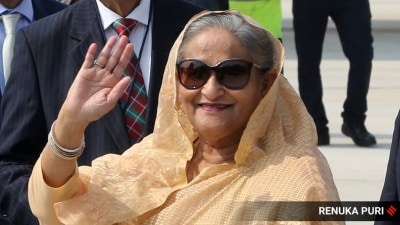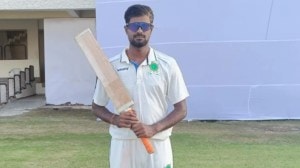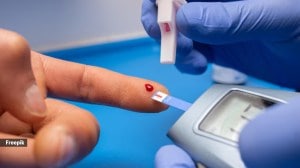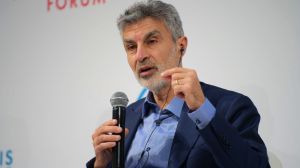Former Dutch PM Dries van Agt, wife die by euthanasia: What is the law, and how is it enacted
The case has drawn widespread curiousity, as the method of death, especially in couples, is still rare. According to the Regional Euthanasia Review Committees, euthanasia of couples was first noted in a review of all cases in 2020, when 26 people were granted euthanasia at the same time as their partners. The numbers grew to 32 the following year and 58 in 2022.
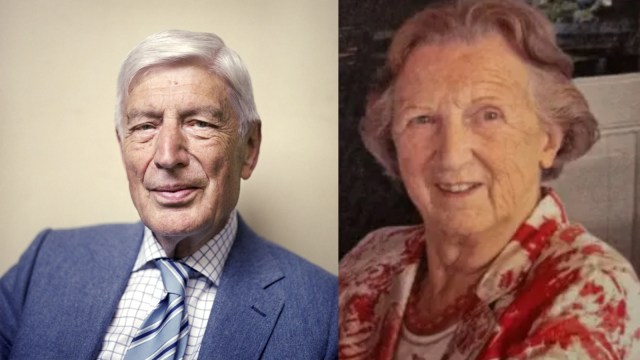 Former Dutch prime minister Dries van Agt and wife Eugenie van Agt-Krekelberg. (Credit: The Rights Forum)
Former Dutch prime minister Dries van Agt and wife Eugenie van Agt-Krekelberg. (Credit: The Rights Forum)In one of the few such rare cases, former Dutch prime minister Dries van Agt and his wife Eugenie van Agt-Krekelberg died by euthanasia earlier this month owing to deteriorating health issues. They both were 93.
According to The Rights Forum, a human rights organisation he founded in December 2009, van Agt died by euthanasia, “hand in hand” together with his wife. As per its director Gerard Jonkman, both were very ill but “couldn’t go without one another”.
Van Agt had never fully recovered from a brain haemorrhage in 2019. His wife too was suffering from age-related issues.
The case has drawn widespread curiousity, as the method of death, especially in couples, is still rare. According to the Regional Euthanasia Review Committees, euthanasia of couples was first noted in a review of all cases in 2020, when 26 people were granted euthanasia at the same time as their partners. The numbers grew to 32 the following year and 58 in 2022. Data for 2023 is yet to be released.
Euthanasia law in Netherlands, and how it is enacted
Euthanasia and assisted suicide have been legal in the Netherlands since 2002 under six conditions, including unbearable suffering, no prospect of relief and a long-held, independent wish for death.
According to the Dutch government’s website, euthanasia is performed in the country by the attending physician administering a fatal dose of a suitable drug to the patient on his or her request. The relevant Dutch legislation also covers physician-assisted suicide, where the physician supplies the drug but the patient administers it. Palliative sedation is not a form of euthanasia: the patient is simply rendered unconscious with pain reducing drugs and eventually dies from natural causes.
Its legalities and criteria
Euthanasia and assisted suicide are legal only if the criteria laid down in the Dutch Termination of Life on Request and Assisted Suicide (Review Procedures) Act are fully observed. Only then is the physician concerned immune from criminal prosecution. Requests for euthanasia often come from patients experiencing unbearable suffering with no prospect of improvement. Their request must be made earnestly and with full conviction. They see euthanasia as the only escape from the situation. However, patients have no absolute right to euthanasia and doctors no absolute duty to perform it.
Guardian spoke to Elke Swart, spokesperson for the Expertisecentrum Euthanasie, which grants the euthanasia wish of about 1,000 people a year in the Netherlands, who said that any couple’s requests for assisted death were tested against strict requirements individually rather than together.
“Interest in this is growing, but it is still rare,” she said. “It is pure chance that two people are suffering unbearably with no prospect of relief at the same time … and that they both wish for euthanasia.”
Active euthanasia vs passive euthanasia
Active euthanasia, which is legal in only a few countries, entails the use of lethal substances to end the life of the patient. Passive euthanasia is when life-support mechanisms that are preserving the patient’s life are withdrawn.
Where does Indian law stand on euthanasia?
While active euthanasia is illegal in the country, the Supreme Court in March 2018 allowed “living will” where, an adult in his conscious mind, is permitted to refuse medical treatment or voluntarily decide not to take medical treatment to embrace death in a natural way. The government, however, is yet to come up with a comprehensive law on passive euthanasia.



- 01
- 02
- 03
- 04
- 05


